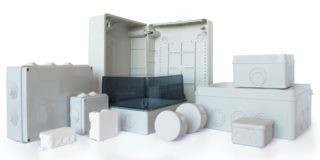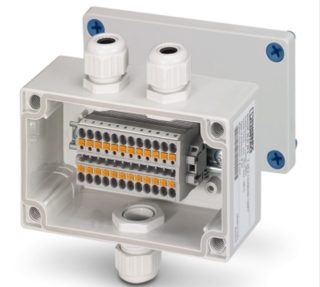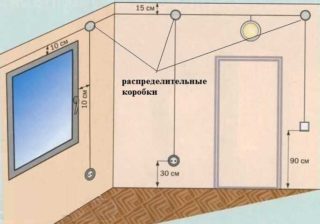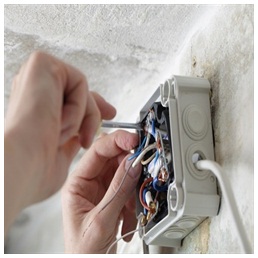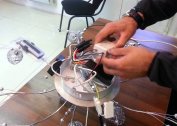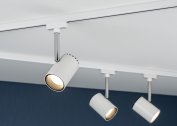Installing a junction box in any room where a person plans to use electricity is an important step in conducting electricity. Thanks to this design, it is possible to seamlessly and safely use electrical wiring. Visually, this is an ordinary box made of plastic or metal, the sides are equipped with holes. Wires depart from the construction, which supply all devices with electricity.
What is the junction box for?
The junction box is a device designed to evenly distribute electric current to the points of the fence, for example, switches and sockets. Thanks to this device, it is possible to conditionally divide the electric network into trunk lines. The main cable is routed to each room, and all switches, sockets and lighting devices are already connected to it.
In addition to basic protection against overheating and burning, the device is able to save wire connections from aggressive environmental factors. The presence of an electrical box prevents the ingress of dirt, moisture and dust.
Types of Junction Boxes
The main difference between the distribution structures is the installation method used. The device can be mounted in the wall and carefully masked with building mixtures or mounted on the surface of the wall.
For open wiring
The junction box for open wiring must be securely fixed to the wall surface. This also applies to cable channels in which electrical wires will be placed. This installation method is preferable to use in industrial enterprises, in offices where the appearance of the room does not play a role. Also, the open installation method is often used in country houses and cottages, technical rooms.
The main advantage of this method is the ability to quickly and unhindered access to the device, as well as the junction of electrical circuits.
For hidden wiring
Devices are installed in a specific wall opening at the junction of the terminals and electrical wires. Installation is also possible in the free space of partitions. This allows you to install the distribution structure and wiring placed in special cable channels located in the wall. Hide them with various building mixtures, for example, plaster. After installation, the appliance door must also be carefully hidden in the wall.
Advantages of the hidden installation method - all details are reliably hidden and do not spoil the appearance of the room. Among the shortcomings, it is worth noting the lack of access to the device. In case of failure, it will be necessary to “spoil” the repair.
Junction box device
According to its purpose, the device case must have a small weight and dimensions, as well as provide high-quality insulation of the connecting points of the wiring. Junction boxes can have a rectangular, square or rounded case, in which there are holes for laying electrical circuits.
Devices intended for external installation have the following types of wall mounts:
- They can be installed on special tension lines, as well as equipped with special fasteners on the cable.
- The housing is equipped with internal holes for a secure fit.
- The presence of external holes.
Switchgears are also divided by material of manufacture and dimensions. Experts recommend giving preference to plastic cases.
Installation Rules
Boxes designed to evenly distribute electricity are installed approximately 25 cm from the ceiling. If the device will be mounted in a hidden way, the cover should be located on the surface so that, if necessary, it can be easily opened and carried out.
Also, for junction boxes for hidden wiring, it is important to find a suitable place so that the interior design concept of the room is not lost.
Installation
Before installation, it is important to familiarize yourself with all the requirements of the regulatory documentation listed in the PUE manual, as well as simple recommendations from specialists with extensive experience.
- The switchgear must always be accessible. Cases are common when, when installing a suspended or stretch ceiling, its level drops, therefore, the device is out of reach. In emergency or emergency situations this can lead to big problems and difficulties.
- If we are talking about an open installation method, the equipment should be checked regularly: inspect the connections for heat, and if necessary, tighten the contacts.
- With a hidden method of mounting in the wall, a recess is required for each distribution structure, which corresponds to the shape and size. The depth should be such that the box then does not protrude from the wall, and the closed lid is almost on par with the surface.
- If the cover of the structure is glued with wallpaper, it is recommended to remember its location or somehow designate. Experts also recommend that houses have schematically shown all the currents of the boxes and the route of the wiring. This will allow you not to forget where what is located, and during the next repair accidentally with a drill you will not stumble on the wiring.
- Outdoor models must be installed on prepared and designed walls.
If a high-quality repair is made in the apartment, house, office so as not to spoil the appearance, it is recommended to arrange a cover for the design of the room or purchase a box with a decorative cover in advance.
Connection principles
To avoid confusion, each wire has a different color for quick connection. The following color combination is considered the most popular: light green, green - grounding, blue - zero, white or yellow color symbolizes the phase. When connecting the device, it is important to strictly follow the sequence.
For the correct connection of wires in the junction box, you must first draw up a project. It is required to determine the exact location of the points of electricity intake. Distribution devices in accordance with the scheme are installed in the most suitable and convenient places.
